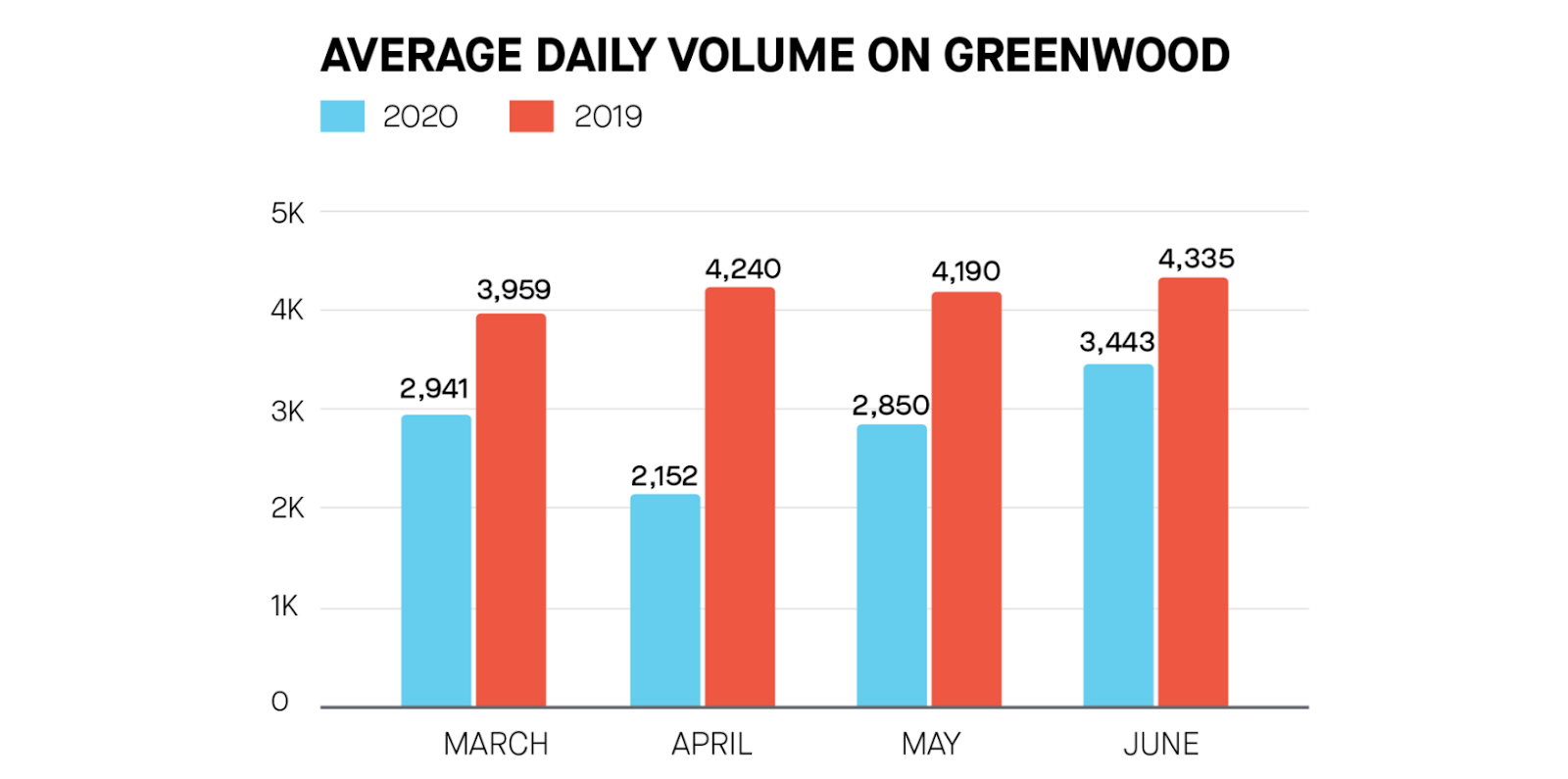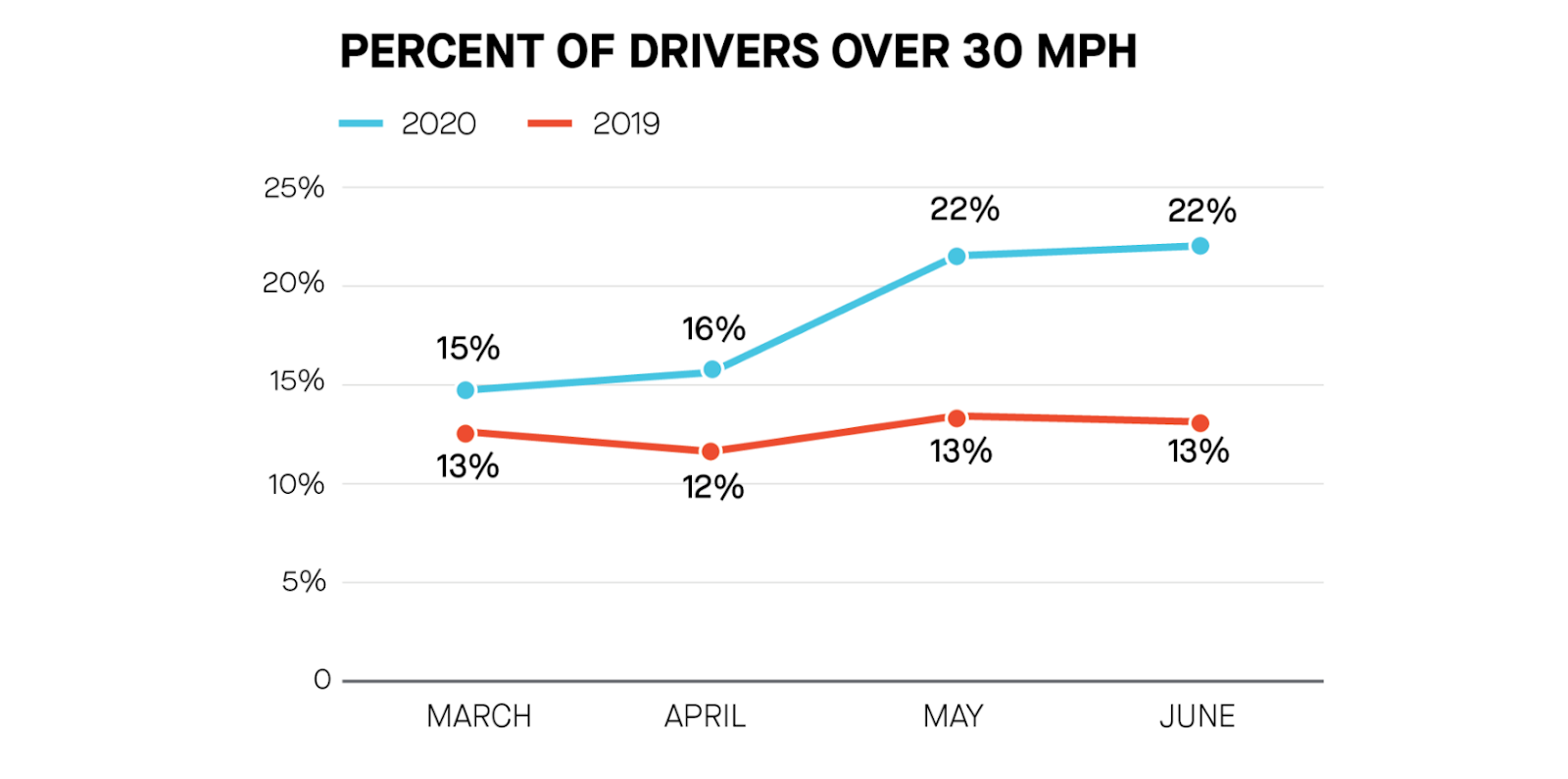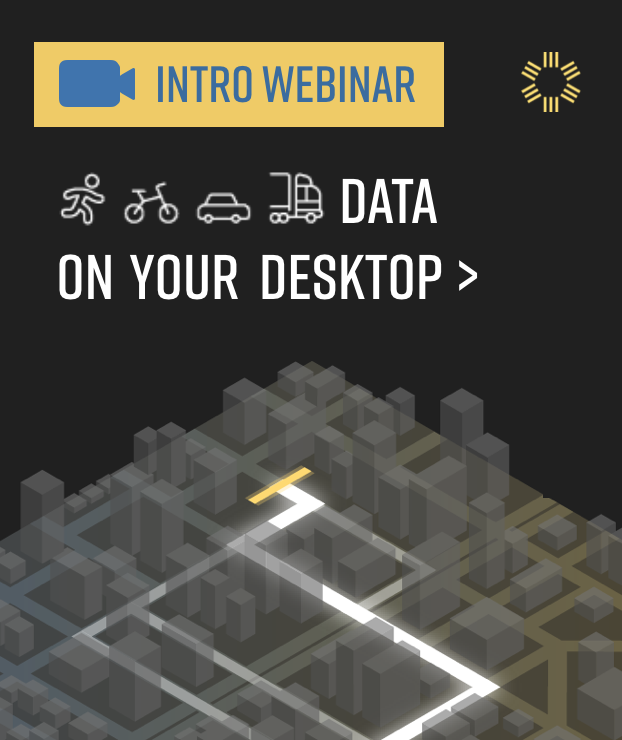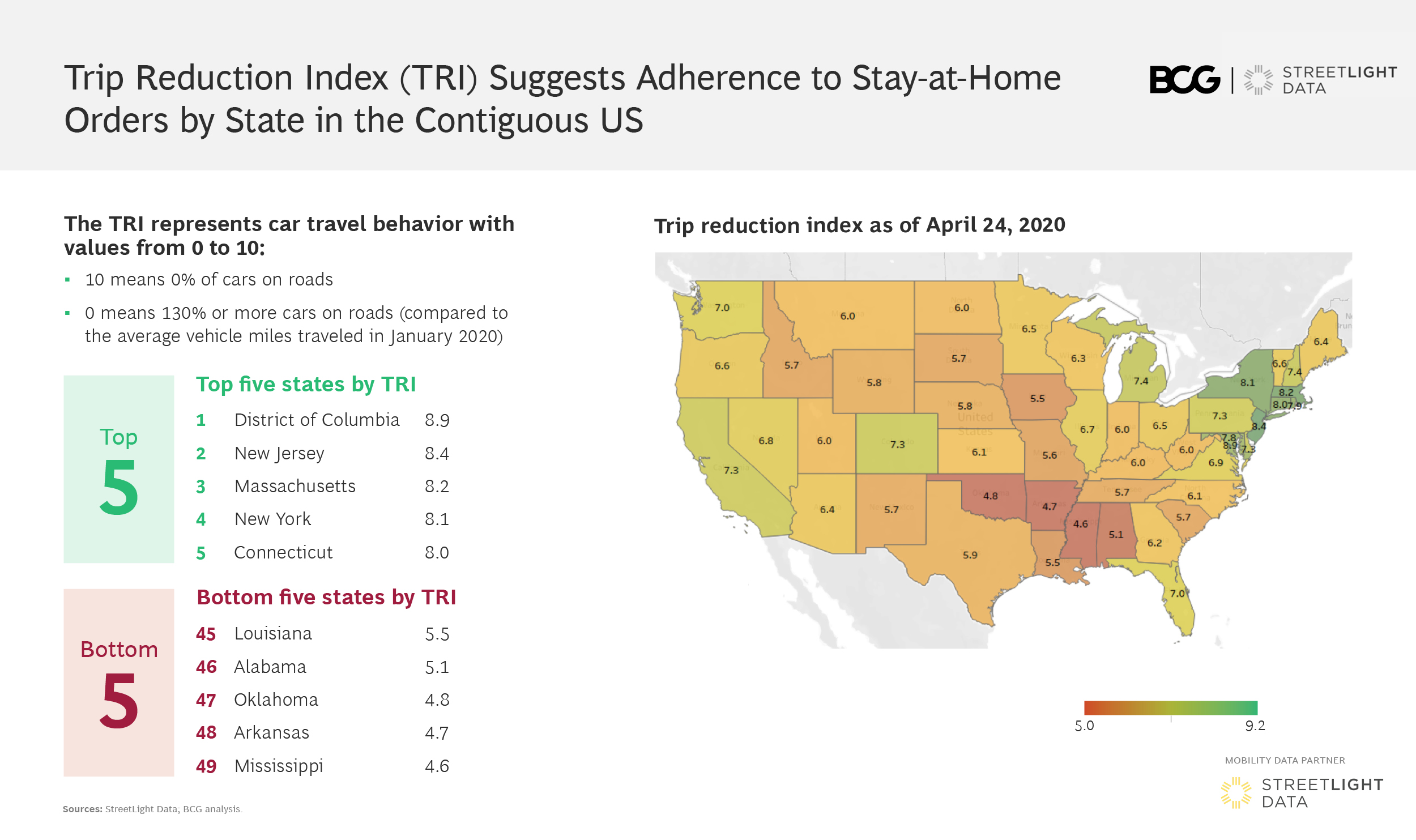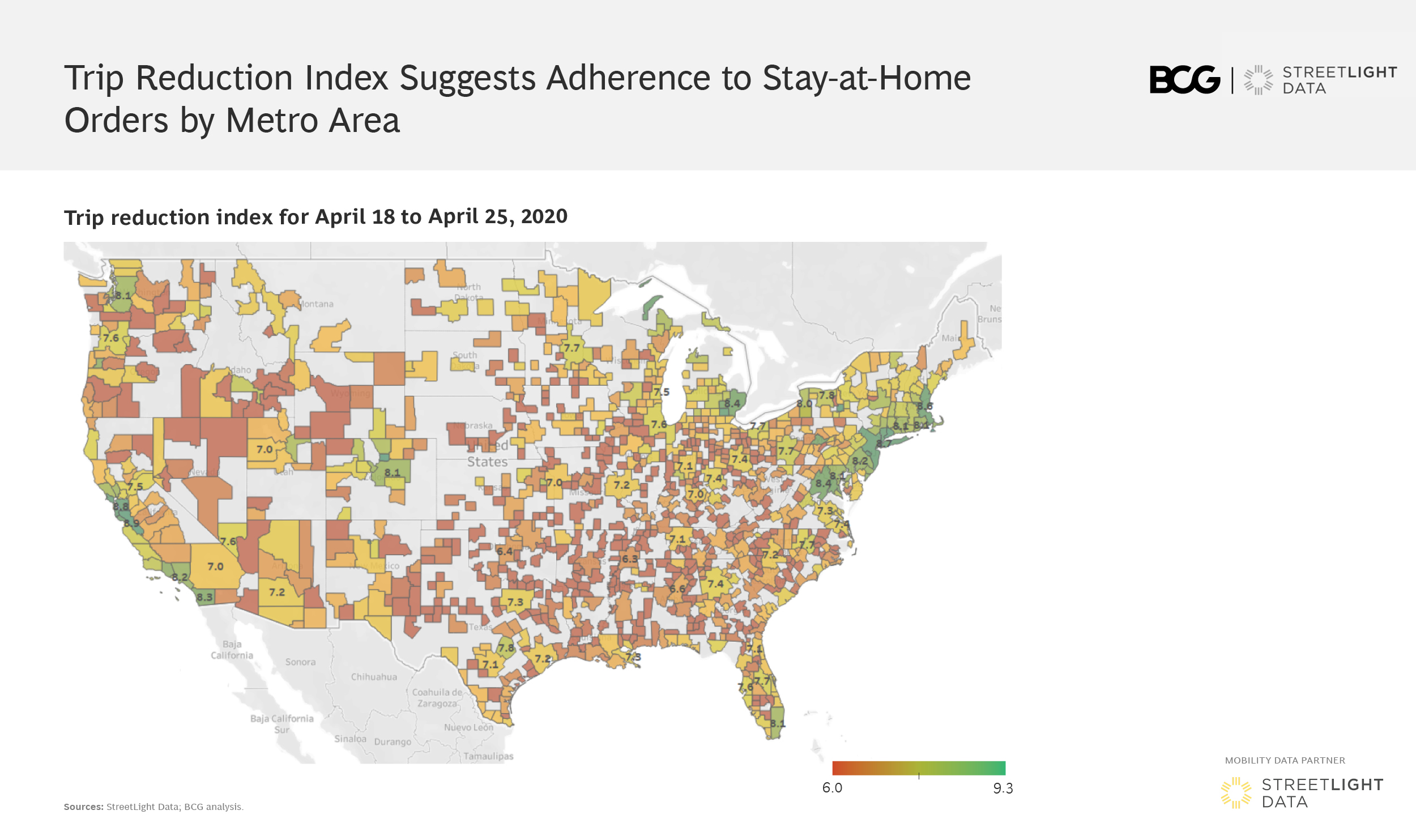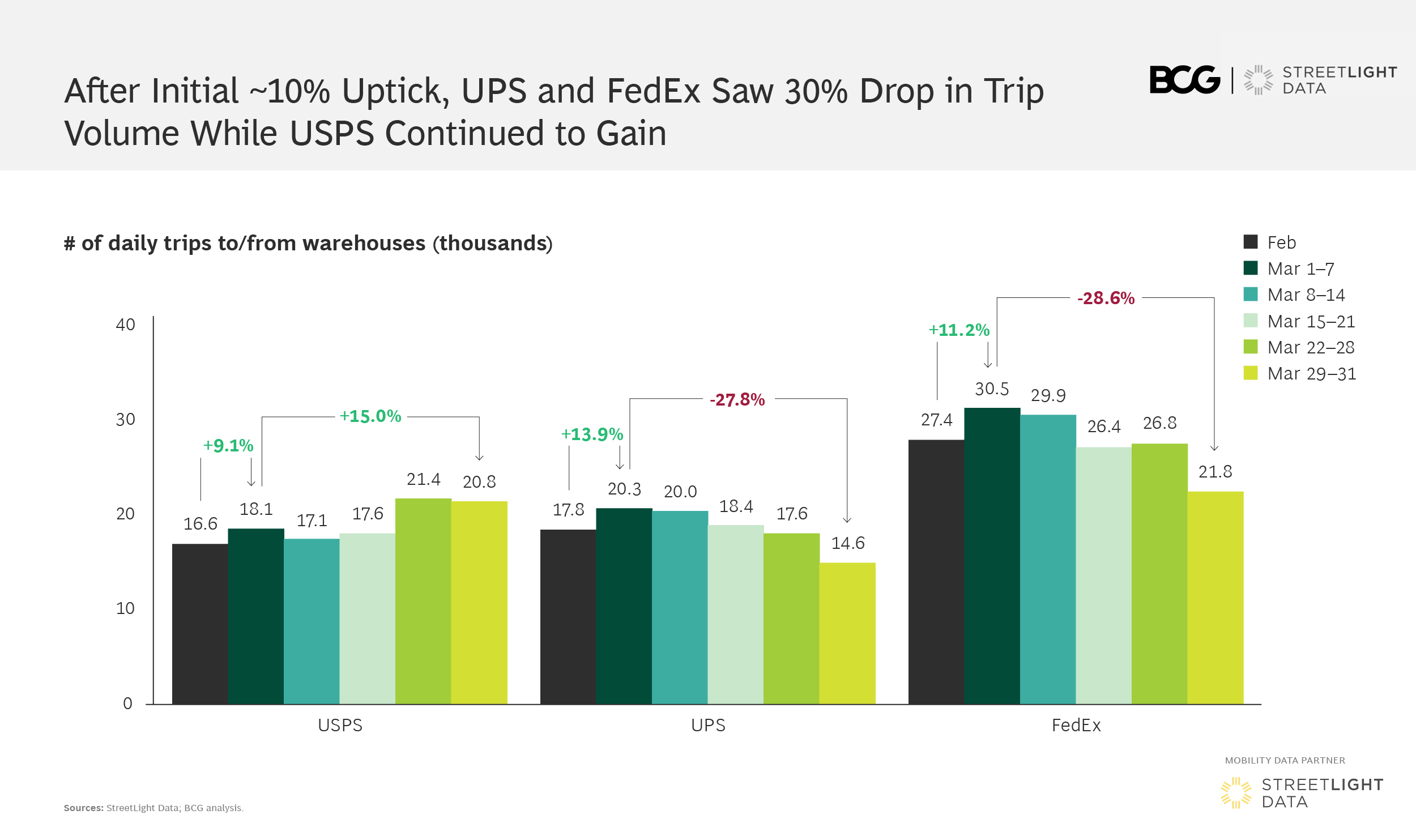
Less Traffic Means Faster — and Deadlier — Driving: Insights from Walk Bike Nashville’s Mobility Data for Safer Streets Project
We asked Spin to share this guest blog about their latest analysis on the Safer Streets program in Nashville, TN, during the COVID-19 pandemic. Josh Johnson is a Public Policy Manager at Spin.
A few months ago Walk Bike Nashville (WBN) started hearing from residents across town that despite the reduction in overall traffic volumes as a result of the pandemic, people were seeing people drive at higher speeds in their neighborhoods. WBN decided to take a look at traffic volume and speeds, starting on Greenwood Ave in East Nashville.
Using the StreetLight Data’s InSight platform, a transportation analytics and visualization tool provided through Spin’s Mobility Data for Safer Streets program, WBN performed an analysis of traffic volume and speed on Greenwood Ave, comparing the months of March through June of 2019 with the same period in 2020. This analysis validated residents’ concerns that despite an overall reduction in traffic this spring, average speeds were up. Even more concerning, the number of people driving over the speed limit was also up.
“The amount that speeding increased due to reduced traffic volume after the first wave of COVID-19 was surprising. It emphasizes the fact that our streets trigger this behavior, and that more work needs to be done to incorporate traffic calming and other infrastructure improvements in order to make streets safer for all users,” said Nora Kern, executive director of Walk Bike Nashville.
Here is more detail on what WBN found:
- During this spring (March — June 2020) total traffic volumes were down on Greenwood by between 20 to 50 percent compared to the same period in 2019. This makes sense, as many people are working from home and reducing their trips during the pandemic.
We asked Spin to share this guest blog about their latest analysis on the Safer Streets program in Nashville, TN, during the COVID-19 pandemic. Josh Johnson is a Public Policy Manager at Spin.
A few months ago Walk Bike Nashville (WBN) started hearing from residents across town that despite the reduction in overall traffic volumes as a result of the pandemic, people were seeing people drive at higher speeds in their neighborhoods. WBN decided to take a look at traffic volume and speeds, starting on Greenwood Ave in East Nashville.
Using the StreetLight InSight® platform, a transportation analytics and visualization tool provided through Spin’s Mobility Data for Safer Streets program, WBN performed an analysis of traffic volume and speed on Greenwood Ave, comparing the months of March through June of 2019 with the same period in 2020. This analysis validated residents’ concerns that despite an overall reduction in traffic this spring, average speeds were up. Even more concerning, the number of people driving over the speed limit was also up.
“The amount that speeding increased due to reduced traffic volume after the first wave of COVID-19 was surprising. It emphasizes the fact that our streets trigger this behavior, and that more work needs to be done to incorporate traffic calming and other infrastructure improvements in order to make streets safer for all users,” said Nora Kern, executive director of Walk Bike Nashville.
Here is more detail on what WBN found:
- During this spring (March — June 2020) total traffic volumes were down on Greenwood by between 20 to 50 percent compared to the same period in 2019. This makes sense, as many people are working from home and reducing their trips during the pandemic.
We asked Spin to share this guest blog about their latest analysis on the Safer Streets program in Nashville, TN, during the COVID-19 pandemic. Josh Johnson is a Public Policy Manager at Spin.
A few months ago Walk Bike Nashville (WBN) started hearing from residents across town that despite the reduction in overall traffic volumes as a result of the pandemic, people were seeing people drive at higher speeds in their neighborhoods. WBN decided to take a look at traffic volume and speeds, starting on Greenwood Ave in East Nashville.
Using StreetLight Data’s InSight platform, a transportation analytics and visualization tool provided through Spin’s Mobility Data for Safer Streets program, WBN performed an analysis of traffic volume and speed on Greenwood Ave, comparing the months of March through June of 2019 with the same period in 2020. This analysis validated residents’ concerns that despite an overall reduction in traffic this spring, average speeds were up. Even more concerning, the number of people driving over the speed limit was also up.
“The amount that speeding increased due to reduced traffic volume after the first wave of COVID-19 was surprising. It emphasizes the fact that our streets trigger this behavior, and that more work needs to be done to incorporate traffic calming and other infrastructure improvements in order to make streets safer for all users,” said Nora Kern, executive director of Walk Bike Nashville.
Here is more detail on what WBN found:
- During this spring (March — June 2020) total traffic volumes were down on Greenwood by between 20 to 50 percent compared to the same period in 2019. This makes sense, as many people are working from home and reducing their trips during the pandemic.
- However, despite the fact that fewer people were driving on Greenwood, the average speed of drivers had gone up. This confirms what the Greenwood neighbors were experiencing: people are driving faster down their street.
- Most troubling of all, the data obtained from StreetLight’s platform also confirmed that the percentage of vehicles driving over the speed limit (30 mph) has also risen in 2020 during the shutdown. In June, 22 percent of people going down the street were over the 30 mph speed limit.
Speeding is deadly; how do we stop it?
Organizations like Walk Bike Nashville have long been advocates for real solutions to this road safety crisis in our neighborhoods, that’s why Spin wanted to give them tools they can use to help save lives.
“We were very grateful to be able to validate the residents’ concerns and bring attention to this critical issue using the tools provided to us by our participation in the Mobility Data for Safer Streets program, and specifically the StreetLight InSight platform,” Kern said.
Speed is the number one contributing factor to car crashes, and the faster someone is driving, the more likely they are to kill someone in a crash. By far the most effective way to manage speeds is through infrastructure: traffic calming, narrow car lanes, wider sidewalks/bike lanes and other street-engineering techniques are essential in addressing traffic safety.
Walk Bike Nashville will continue to advocate for funding for traffic calming and for the city’s new Vision Zero program — these infrastructure investments are essential to keeping all Nashvillians safe when they are on the city’s streets. You can join them at their website: www.walkbikenashville.org.When our partner Boston Consulting Group used StreetLight’s VMT metrics to create a Trip Reduction Index, we were impressed by the methodology and the results. From calculating COVID’s impact on tax revenue to understanding how household income correlates with sheltering in place, the examples illustrate how transportation insights can be used to study the pandemic’s impact on residents, businesses, and budgets.
Just Where Are People Traveling Less?
BCG and StreetLight have studied vehicle miles traveled (VMT) statistics from the beginning of March, as the COVID-19 pandemic took hold, and created a “Trip Reduction Index” that was used to measure adherence to stay-at-home policies in each state, county, and MSA. A few key insights stand out.
When our partner Boston Consulting Group used StreetLight’s VMT metrics to create a Trip Reduction Index, we were impressed by the methodology and the results. From calculating COVID’s impact on tax revenue to understanding how household income correlates with sheltering in place, the examples illustrate how transportation insights can be used to study the pandemic’s impact on residents, businesses, and budgets.
Just Where Are People Traveling Less?
BCG and StreetLight have studied vehicle miles traveled (VMT) statistics from the beginning of March, as the COVID-19 pandemic took hold, and created a “Trip Reduction Index” that was used to measure adherence to stay-at-home policies in each state, county, and MSA. A few key insights stand out.
First, we analyzed the U.S. overall to see trends state by state. As shown in the figure above, COVID-19 hotspots like the NY-NJ-CT “tri-state” area, Detroit, Chicago, and California have seen the highest level of trip reductions since March.
We then dug down to the county and metro-area level for a more localized analysis of VMT statistics. We found that population density is a key factor in adherence to stay-at-home orders. Urban counties saw on average a reduction in VMT by about 40% more than rural counties.
Using additional metrics from StreetLight InSight® we overlaid demographic data for an interesting finding. One of the key correlating factors for trip reductions turns out to be household income. This possibly results from the ability that higher-wage workers have to work from home, compared with those in positions requiring them to be at a physical location.
Impact on Freight and Commercial Travel
BCG and StreetLight studied VMT statistics from the perspective of commercial activity by studying trip volume at warehouses across the U.S. in March, as the COVID-19 pandemic took hold. We saw an initial surge in trip volume by approximately 10% across the top three players (the U.S. Postal Service, UPS and Fedex), driven by an uptick in online ordering at the beginning of lockdown measures. But over the long term, two of these top U.S. logistics players have experienced a 30% decline in trip volume.
The demand for food and consumables spiked, leading some CPGs, distributors, and retailers to run flat out for a few weeks while consumers scrambled to stock up on necessities. That surge has begun to slow down as consumers gain confidence that essentials would be available in the days ahead. Yet business has slowed among other parts of the retail value chain, as well as in manufacturing and non-essential retail segments, with stay-at-home orders significantly reducing customer visits.
Resulting Revenue Challenges
VMT statistics show a decline in each state by at least 65% since the beginning of March, when the COVID-19 pandemic took hold. States and areas with larger urban populations, such as DC and NY, saw their VMT drop 81 – 88%, the result of a combination of strict stay-at-home orders, reductions in commercial activity, and the availability of public transit as an alternative for essential workers.
This broad VMT decrease poses a significant revenue challenge for state budgets. It may ultimately accelerate the deployment of congestion pricing schemes and changes in tolling rates to recoup lost revenue, anticipating that VMT picks up as lockdown measures are relaxed and private vehicle usage rebounds faster than transit ridership.
California feels the largest impact, with an estimated daily $14.5 million loss in gas tax vs. what is expected at a VMT baseline. Florida, Texas, Illinois, and New York also face more than $4.5 million in daily losses, and the USDOT an additional $43.5 million.
We performed our analysis in StreetLight InSight® , the proprietary online platform for customers. But StreetLight is offering vehicle miles traveled statistics via their VMT Monitor — available for free during the pandemic. This resource is an invaluable starting point for understanding the impact of reduced travel on your region.
Augustin K. Wegscheider is a partner at Boston Consulting Group’s Automotive & Mobility Practice, where he manages the Center for Mobility Innovation in North America.

